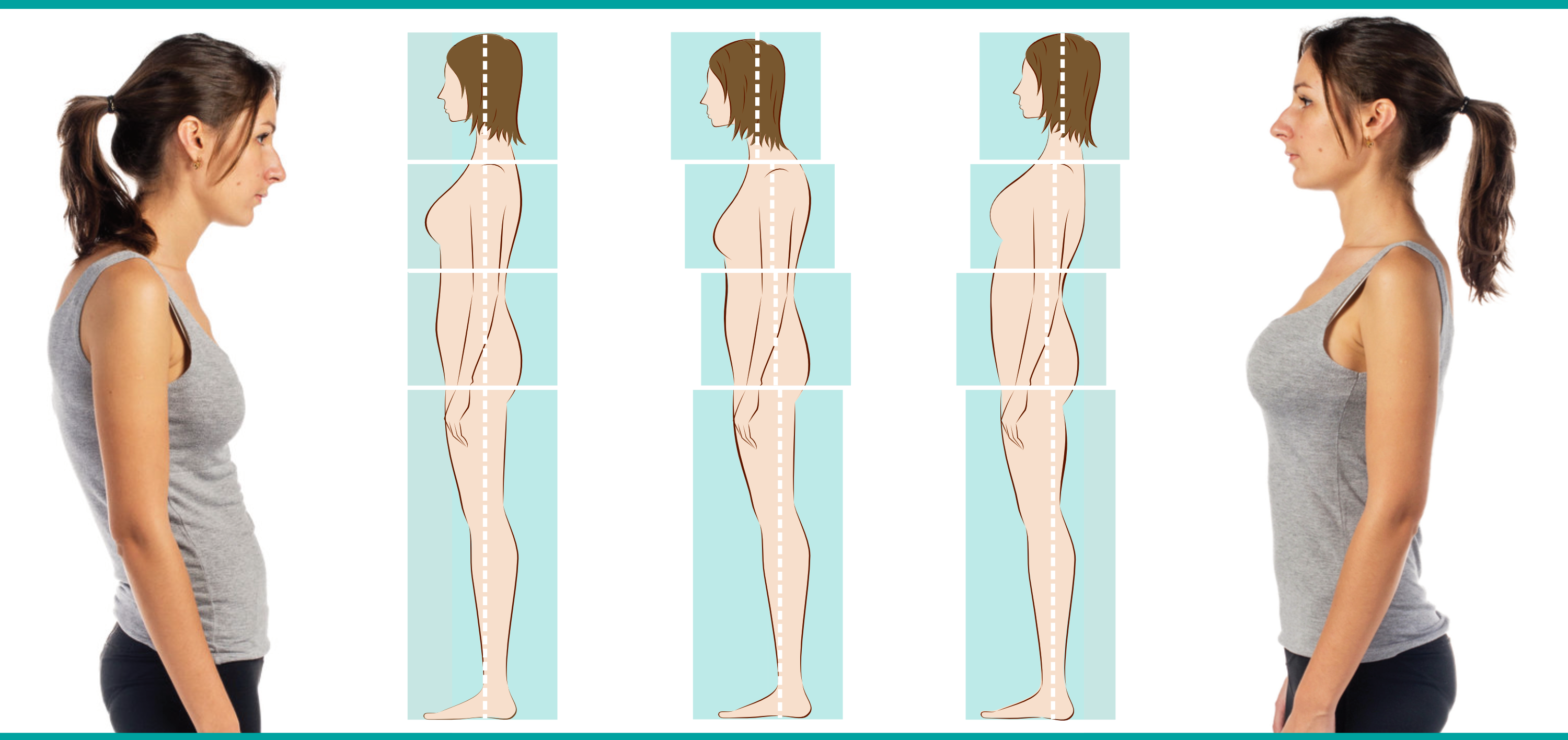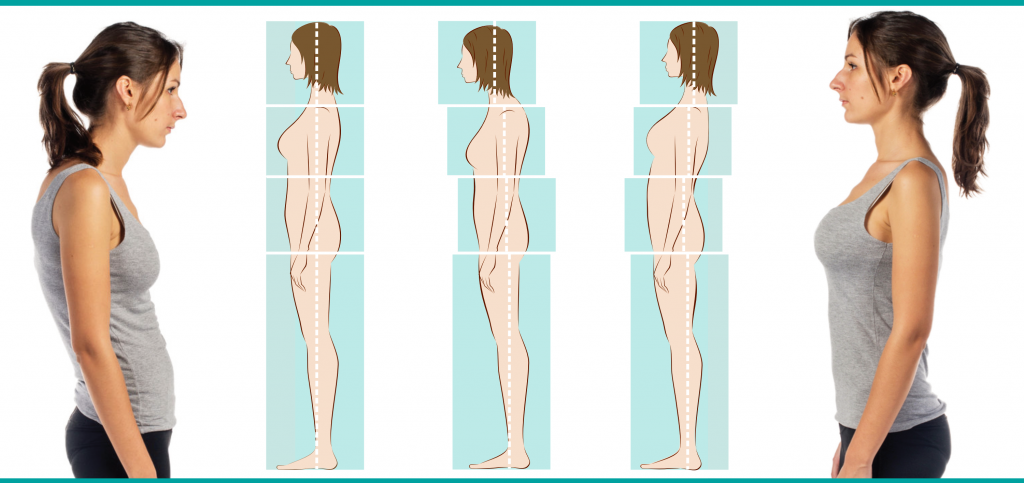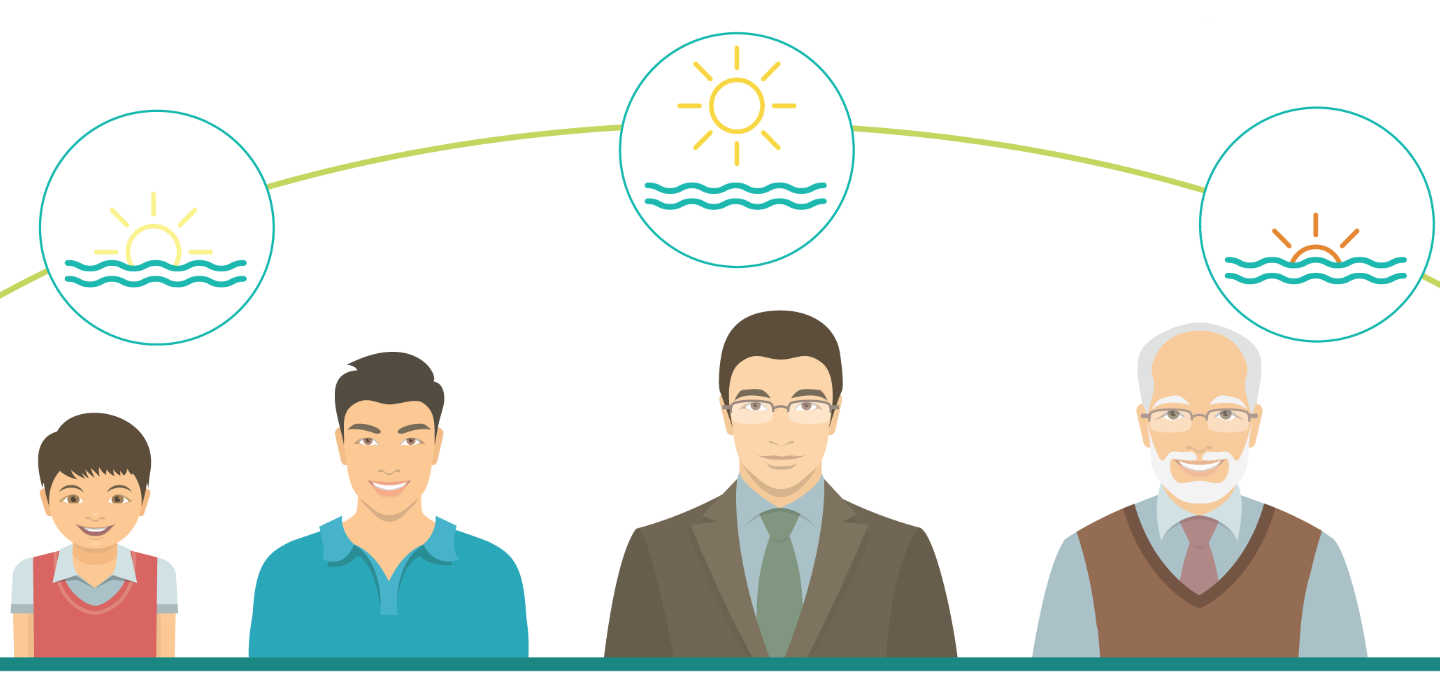How does your posture impact the way you feel?

A neighbor said to me few weeks ago: “You have such a great posture – you stand up so straight.” What was meant as a compliment actually reminded me that my postural habits often pull me toward the “military posture” (it manifests in lifting the chest up and pulling the shoulder blades down), which causes chronic upper back and neck tension. I have to work hard in my yoga practice to overcome those postural habits. What appears to be a good posture is not always good for your body.
Each one of us develops a unique way of carrying the body based on our physical structure and habitual movement patterns, as well as physical discomforts and mood. Those patterns of body positioning affect us in three important ways:
1. They can create chronic tension and pain in the upper or lower back, neck and hips, if the spinal curves do not align over each other properly. We have our spinal curves for a reason – they help us distribute the weight of the heavier parts of the body within gravitational pull. The cervical curve is necessary to support the weight of the head; thoracic spine balances out the weight of the rib cage and the head above it, and the lumbar spine negotiates the relationship between the pelvis and all the structures above it. When the spinal curves are not stacked properly on top of each other, your muscles have to work much harder to maintain an upright position, over time causing muscle imbalances, weakness and chronic tension.
2. They broadcast our physical and emotional state to the world and affect how other people perceive us (for example, somebody who exhibits a more military posture is perceived as being more confident and in charge, while somebody who slouches and looks down a lot is often perceived as insecure and withdrawn).
3. They impact our mood and self-esteem. The latest research shows that posture has a great impact on our mental state. This article from the New York Times emphasizes that “posture doesn’t just reflect our emotional states; it can also cause them.” For example, studies show that the slouchers reported significantly lower self-esteem and mood, and much greater fear; they were more likely to be more negative when they talk, and recall more negative experiences.
In our yoga practice we can either reinforce the existing postural patterns or work on correcting them. Many yoga students I see are concerned about their posture and try to “self-correct” by intentionally rearranging the positioning of their body parts. For example, if someone’s head is displaced in front of the body, the student might insist on pushing it back; if somebody thinks of their posture as “slouchy” she might intentionally pull the shoulders back, and so on. Unfortunately this type of self-correcting often backfires. There is a better way to approach it. This will be the topic of conversation at the webinar that I will be teaching for Yoga U online in February.
In this two hour workshop I will talk about three main problems with “self-correcting” the posture and a more effective way to approach postural alignment. In the first part of the workshop you will discover why sometimes a “good posture” is not so good for your body. You will learn:
• Three types of posture and how each impacts the body
• Problems with self-correcting the posture
• Four steps to minimize the stress placed on the intervertebral disks
• How to lengthen the spine without strain
• How to align your spine properly in seated poses like Virasana (Hero pose) and Sukhasana (Easy pose)
• How to modify your instructions based on the spinal shape of your students.
In the second part of the workshop you will focus on the “Core players” – the muscles that move your trunk. You will learn:
• Four main functions of your core muscles
• How to protect your lower back while strengthening your core
• How to avoid stressing your shoulders in poses like Downward Facing Dog and Chatturanga Dandasana
• Four types of axial extension poses and how to position the body to get the most out of each
• How to identify the misalignments that might strain the student’s neck, shoulders and back while attempting axial extension poses, and how to troubleshoot them.
You will also get a 40-minute exploratory yoga practice that will show you how to help your students strengthen the core and encourage better posture without stressing their necks, shoulders and backs.
Hope to see you there!
 Yoga for Posture Improvement: Focus on Core Strengthening and Axial Extension
Yoga for Posture Improvement: Focus on Core Strengthening and Axial Extension
Monday, February 26 & Thursday, March 1, 2018
8:30 pm Eastern / 5:30 pm Pacific
Join us live or listen to the recordings at your convenience.
Price: $87 For more information and to enroll >
Subscribe to Blog via Email











I know posture it’s important but I didn’t think about all the effects that it could have on my emotional state. This is something I worry about, especially because I spend a lot of time working in front of a computer. Yoga is an excellent solution, I think. Seems like this webinar will be very useful for people like me.